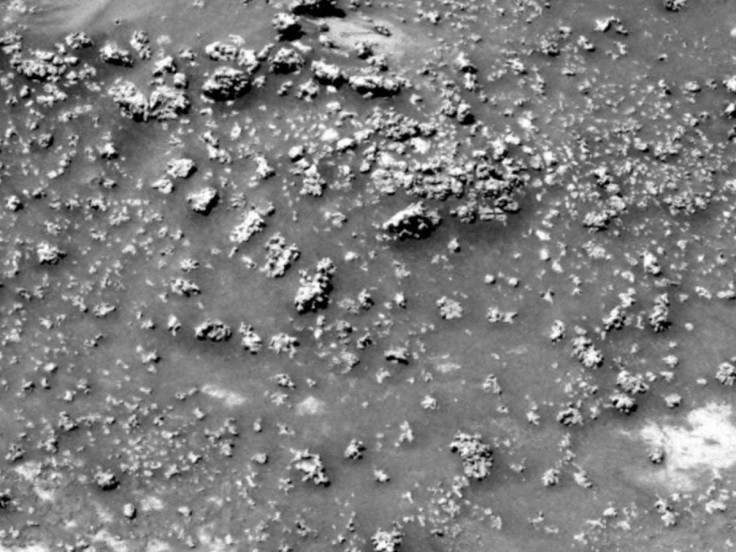Life on Mars? Scientists struggle to find explanation for tiny 'cauliflower' formations on Red Planet

Scientists believe they have found some of the most convincing evidence yet that primitive life may once have existed on Mars. Mineral deposits photographed by the Mars Spirit Rover closely resemble ones found in similar conditions here on Earth, which were formed by living microbes. The formations were found inside Gusev crater on the Red Planet in 2008/9. Identified as being formed of opaline silica, the formations looked like tiny "cauliflowers" but scientists cannot explain why.

Now scientists from Arizona State University have found almost identical formations in some of the harshest regions on earth, including the Atacama Desert in Chile – the driest region on earth – and the volcanic regions of New Zealand. Steven Ruff and Jack Farmer believe these fossilised remains may have been formed in the same way.
However it may be a while before Ruff and Farmer's theory can be investigated. The Curiosity Rover is too far from Gusev Crater and there is no way to bring back the formations for analysis. It is hoped that the next rover to land on Mars in 2020 may land much closer to the formations and possibly get a bit closer to the truth.
Scientists have speculated about the possibility of life on Mars for hundreds of years, when it was thought the planet was criss-crossed by canals. Despite occasional false alarms, and bizarre claims about crabs, coffins and gorillas, no evidence of extra-terrestrial life has yet been proved – on Mars or anywhere else. In fact moons such as Europa are thought to be far more likely to support life than the harsh environment of Mars.
The discovery of running water on Mars raised hopes but the water there is mineral-heavy and to date no trace of life has been found. However if it could be proved that life existed on Mars, that would suggest that it could begin and develop across the universe, which would rank as one of the most important discoveries of all time.
© Copyright IBTimes 2025. All rights reserved.






















